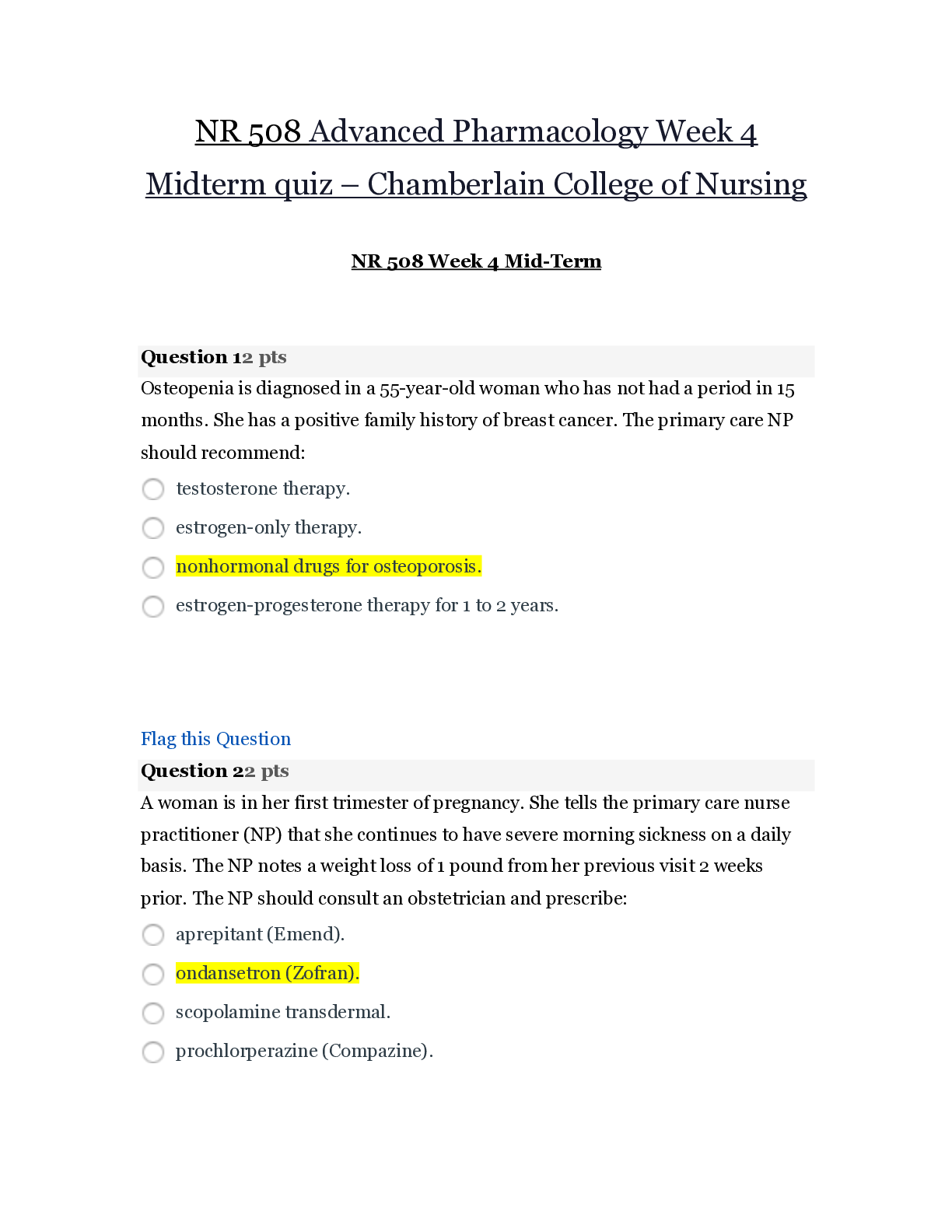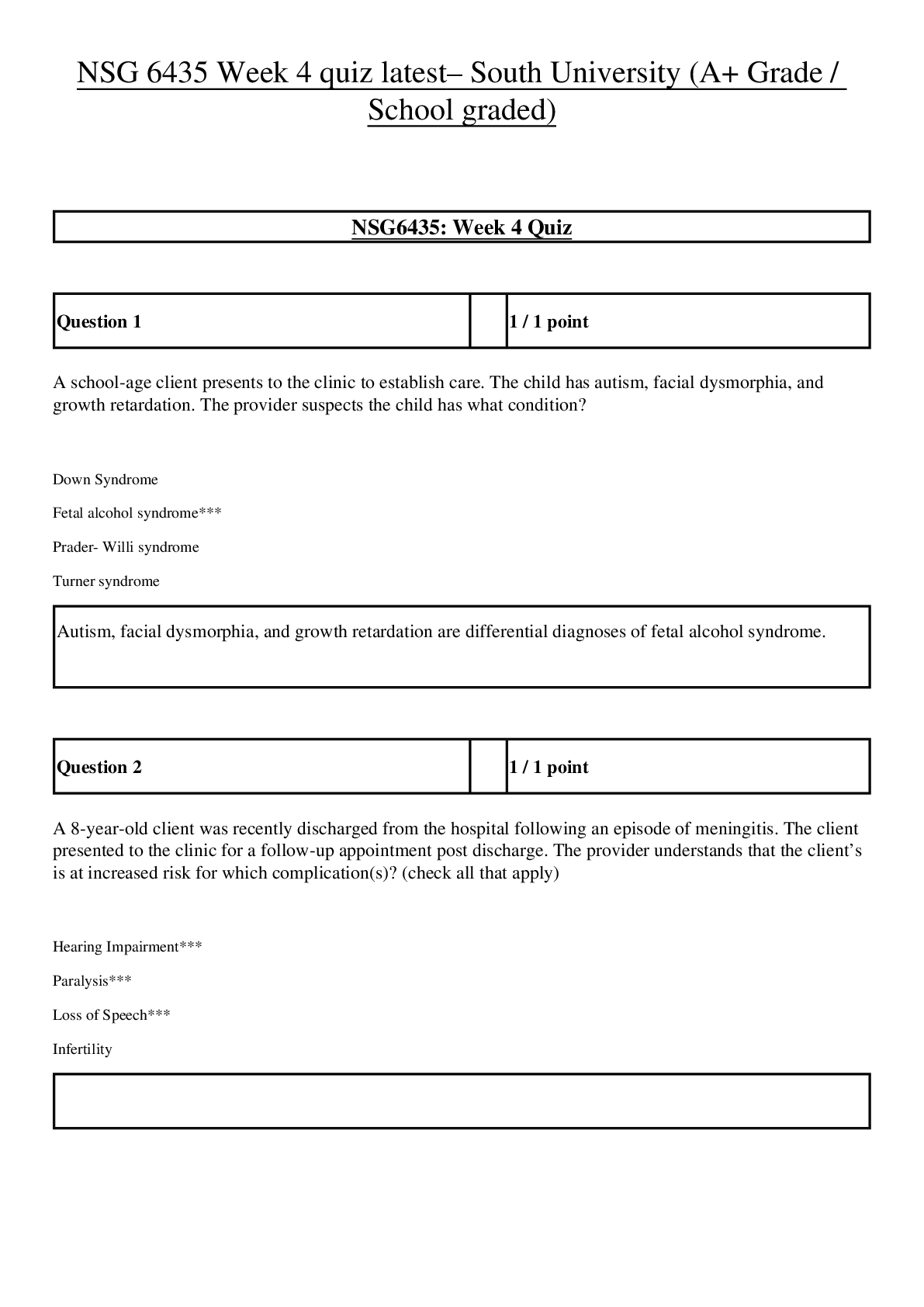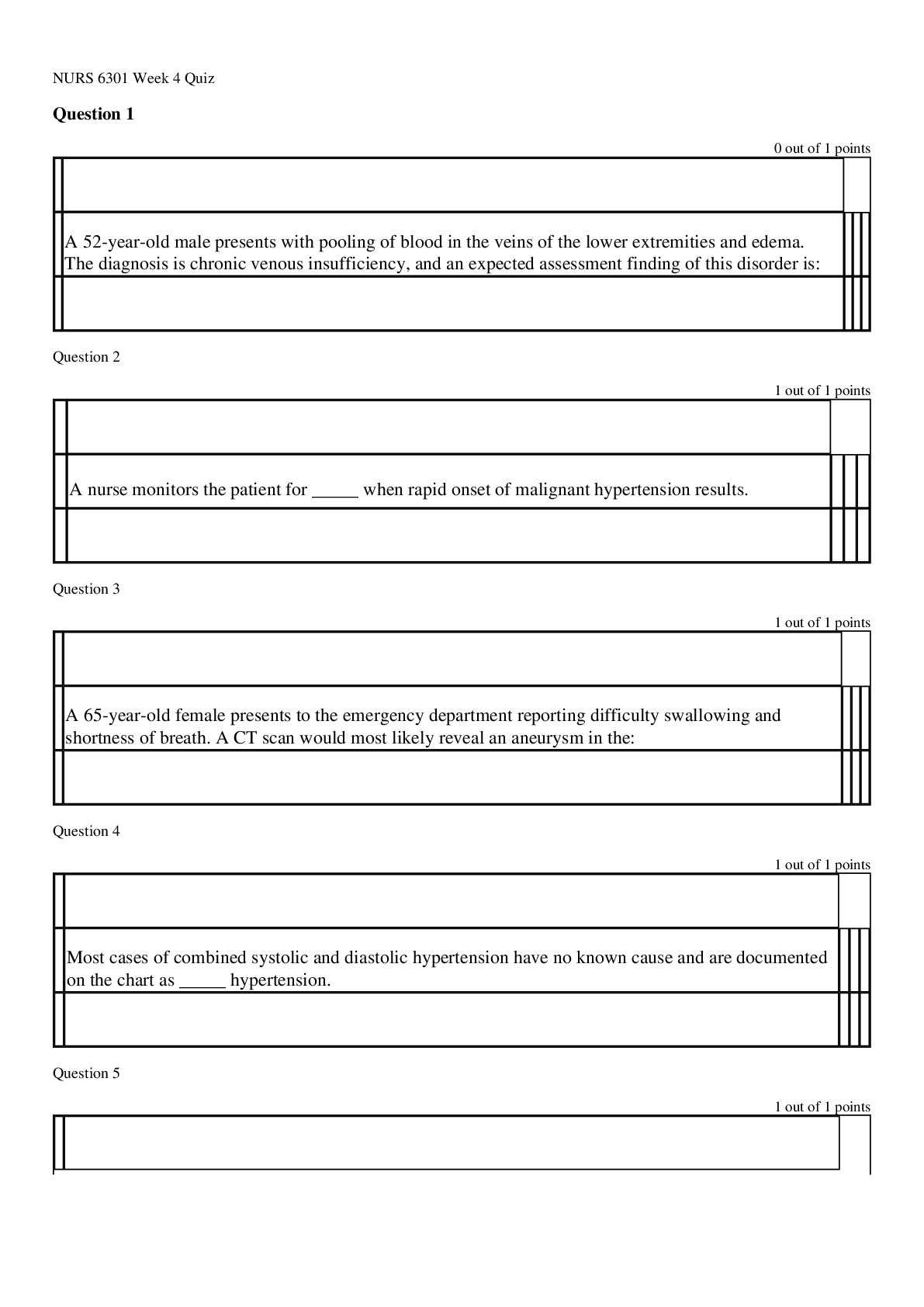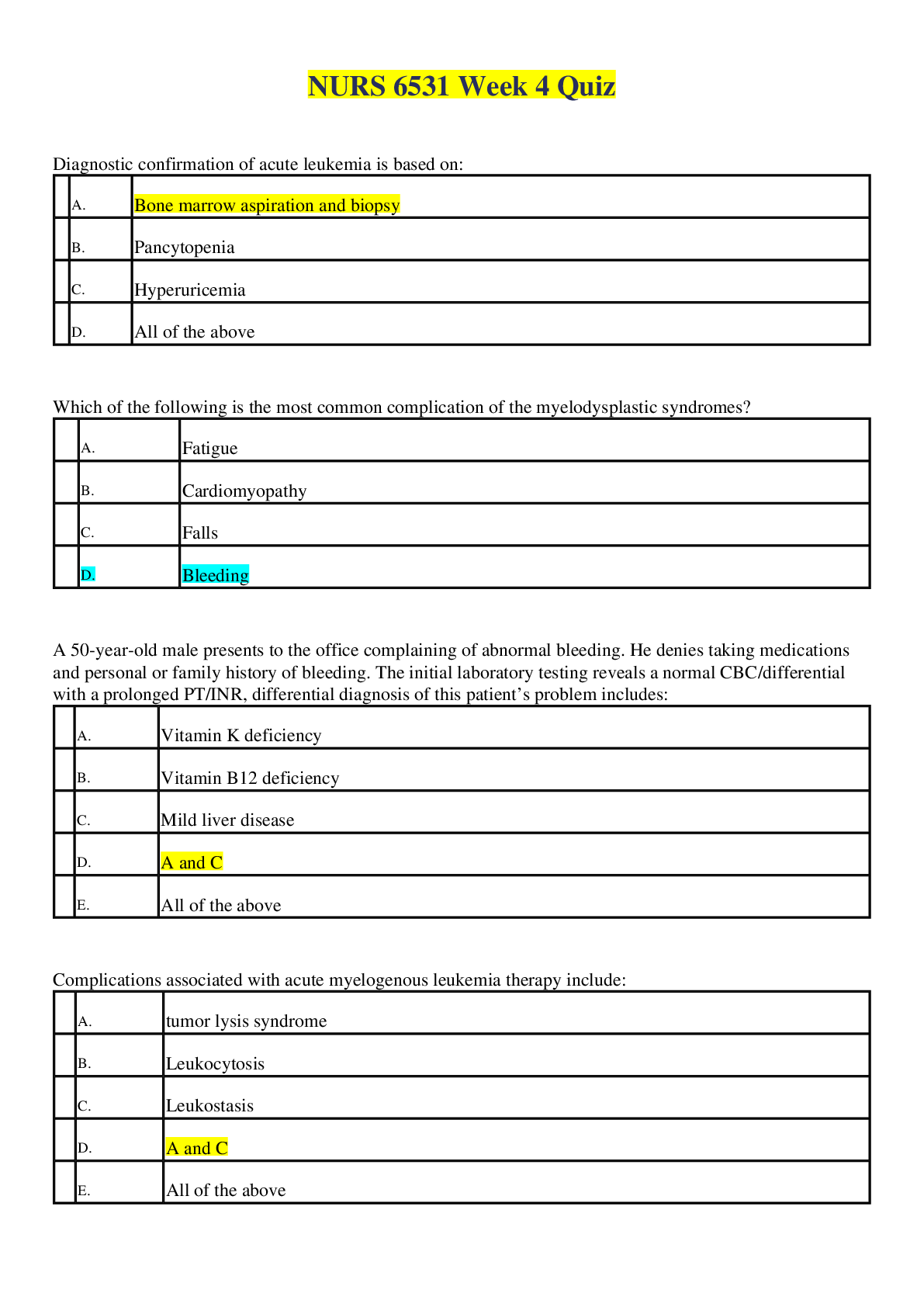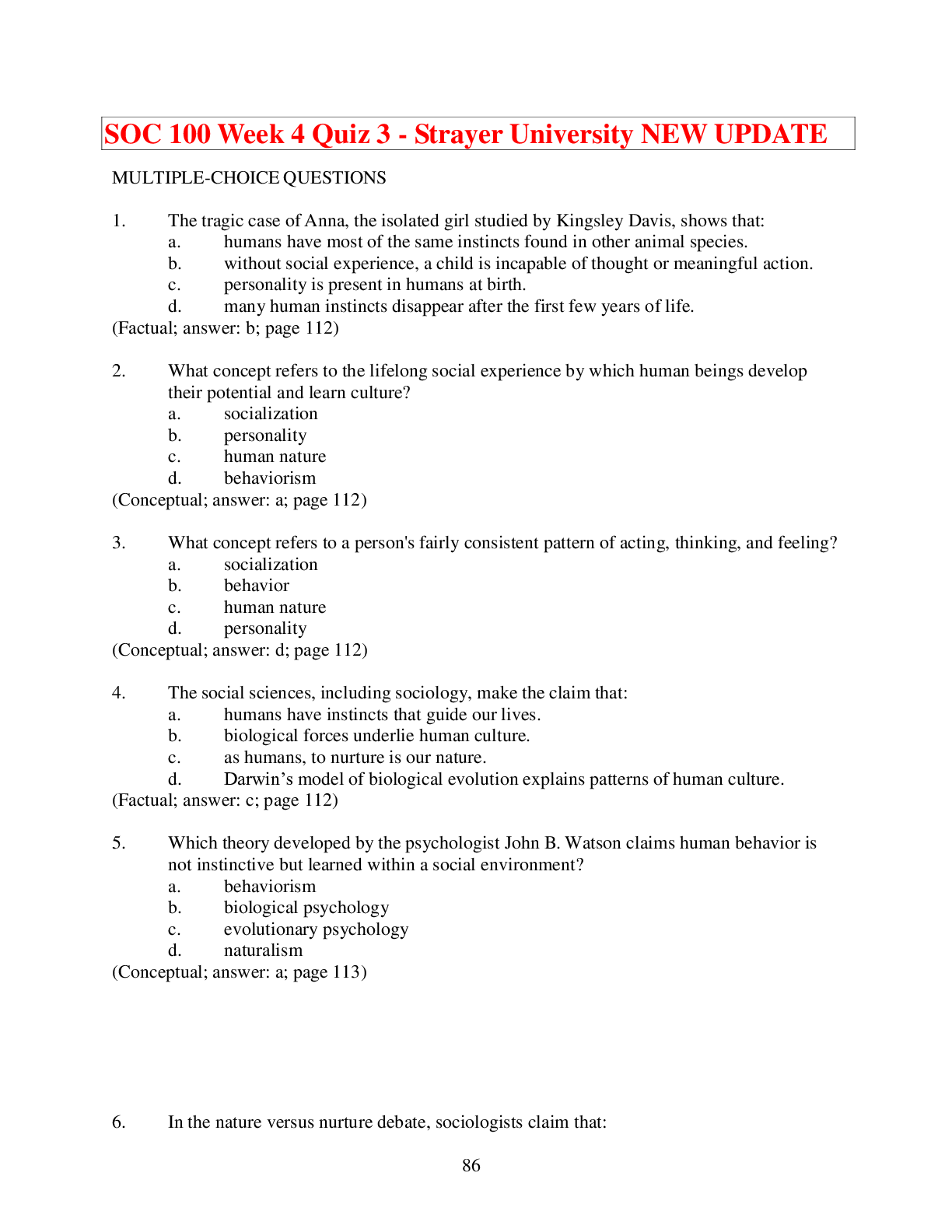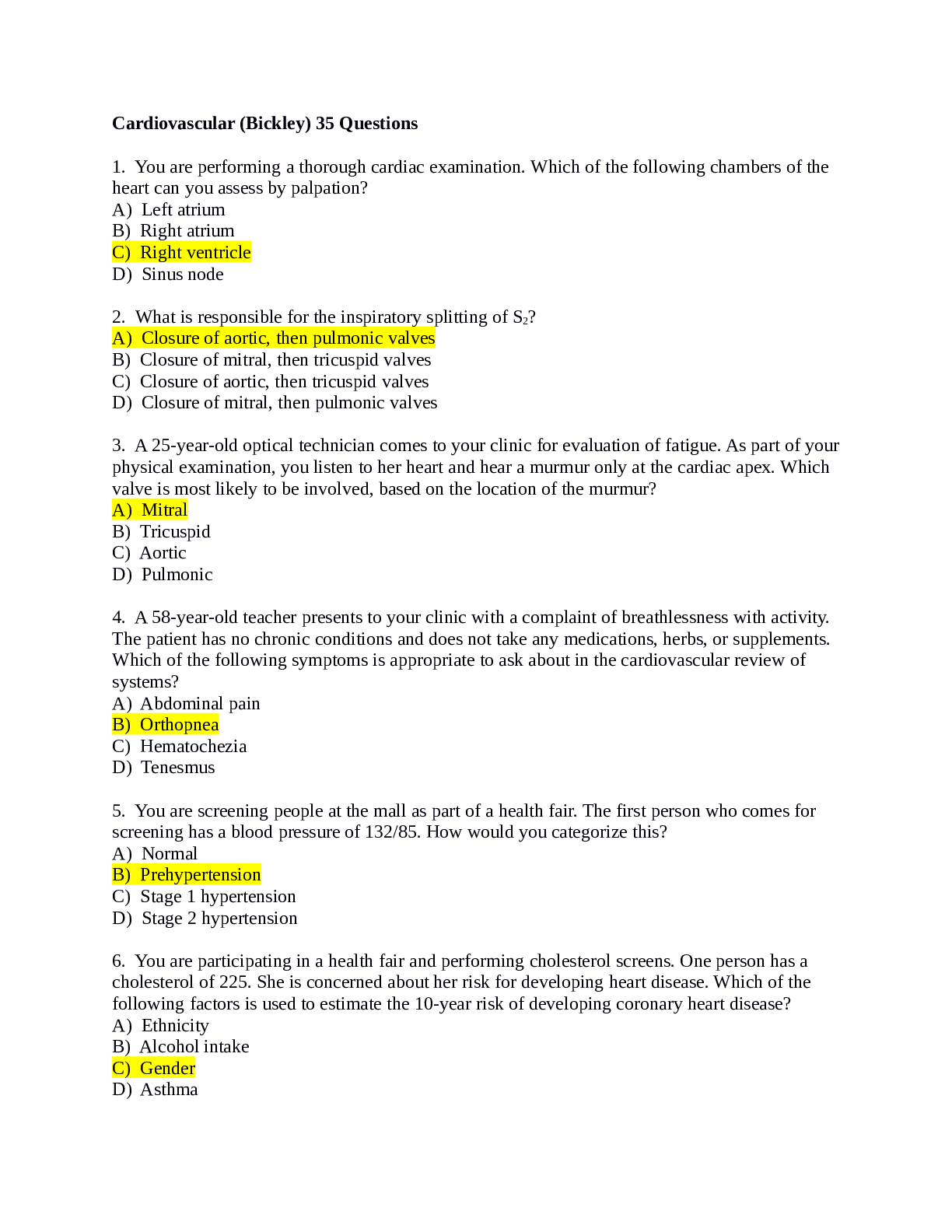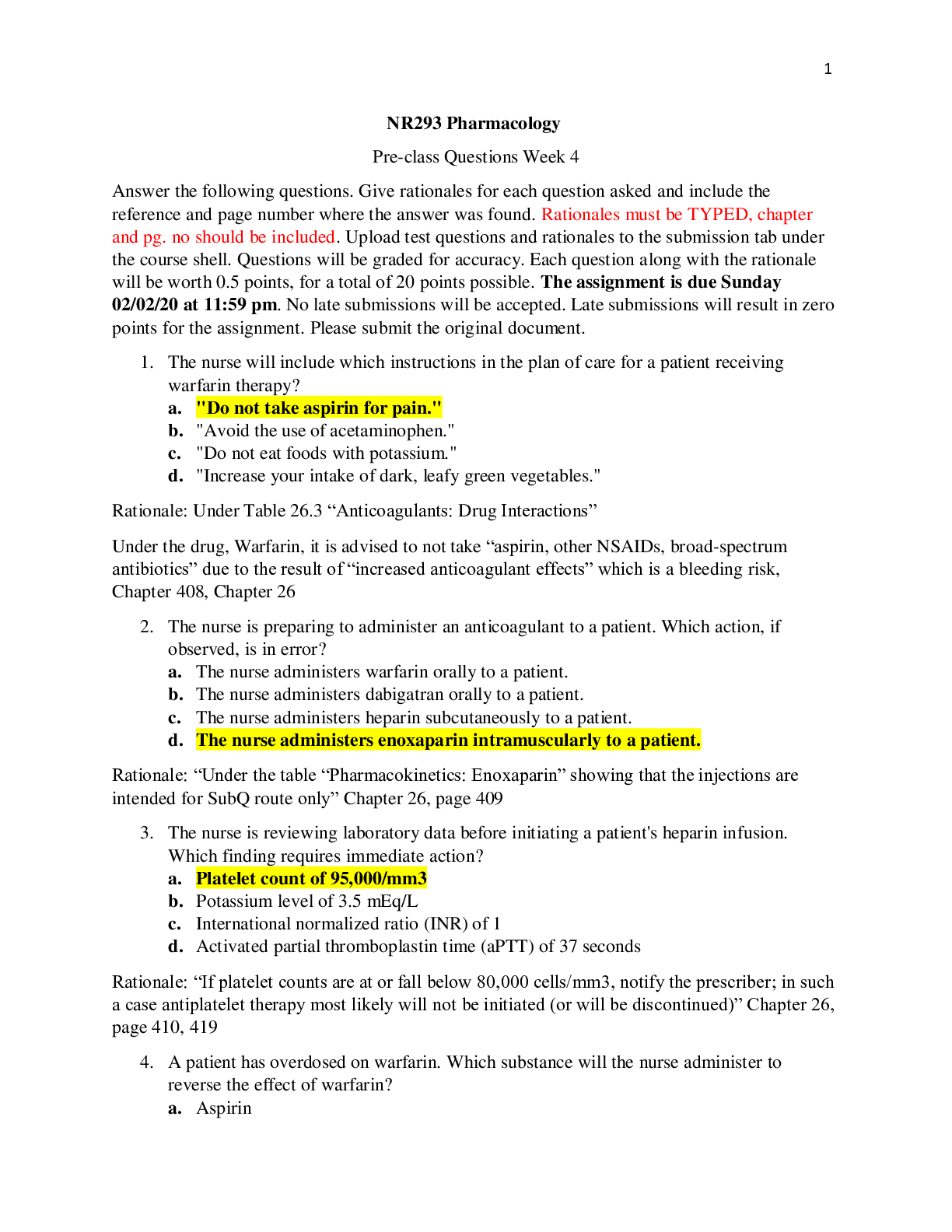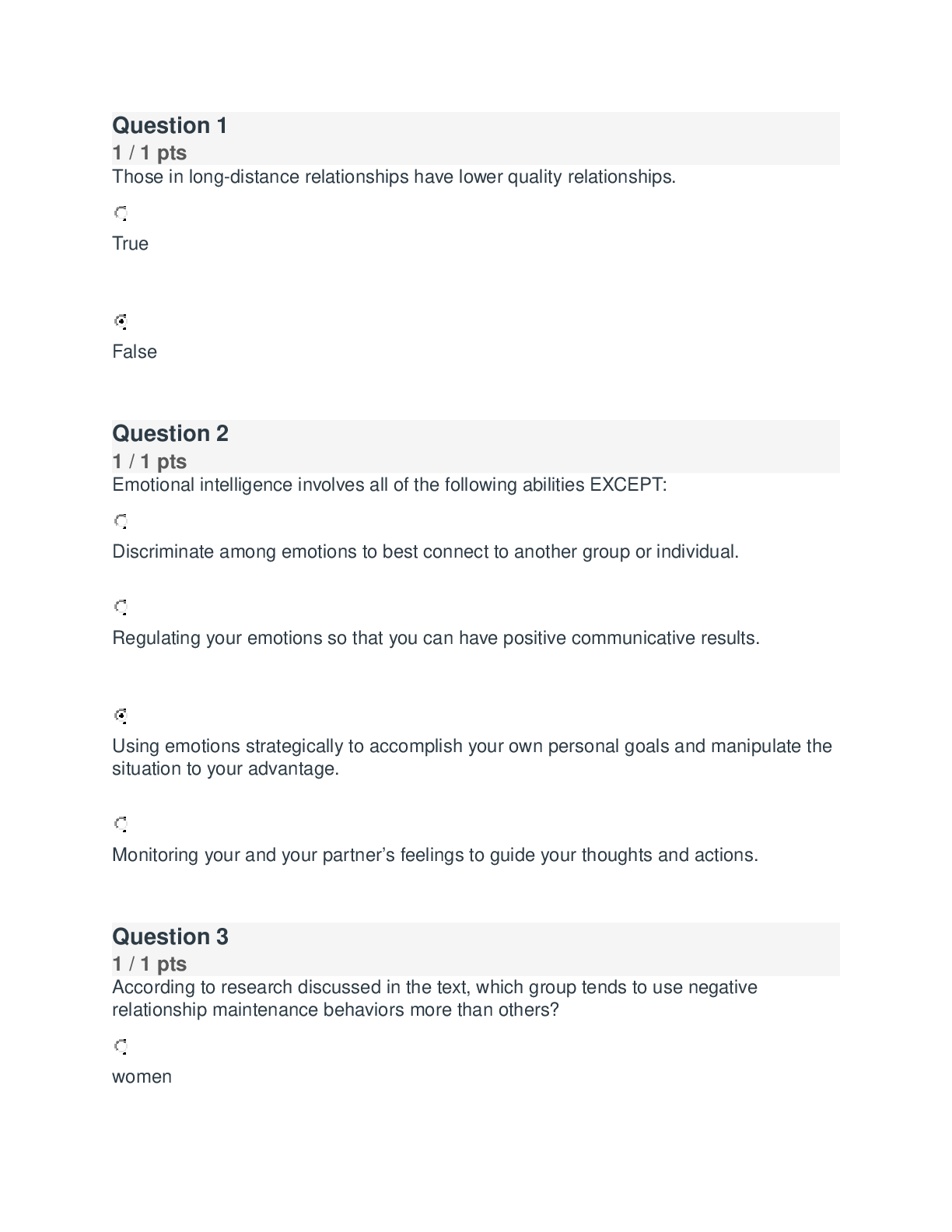NURS 6560 Week 4 Quiz with Answers Walden University GradeAplus
Document Content and Description Below
1. A patient is examined in the ED for chest pain and dyspnea. His heart rate is 110 and on exam, he has muffled heart sounds and JVD. On measurement of blood pressure by a cuff sphygmomanometer, ther... e is an exaggerated decrease in blood pressure with inspiration. What is his most likely diagnosis? 2. A 49-year-old man with a history of chronic renal failure on intermittent HD, HTN, and DM presents to the ED ? weakness, nausea, and mild SOB for the past few days. An ECG shows wide QRS and peaked T-waves. The patient receives 325 mg ASA and SL NTG. Which of the following answer choices is another critical treatment priority? Calcium gluconate. 3. Which of the following statements concerning ECG findings during an acute MI is incorrect? 4. The generation of an action potential w/in cardiac monocytes is largely governed by ion movement. Movement of several different ions generates 4 general phases of each AP: rapid depolarization, rapid repolarization, plateau, final rapid repolarization, and resting. Which ion is primarily responsible for rapid depolarization? 5. Both ACE inhibitors and ARBS act on the renin-angiotensin system. ACE can cause a cough while ARBS typically do not. Why is this? ARBs cause less bradykinin formation. 6. According to the American College of Cardiology/AHA Guidelines, which of the following is an indication for prophylactic antibiotics to prevent bacterial endocarditis in a patient with a prosthetic heart valve? 7. Which of the following is initially characterized by high cardiac output, low right atrial pressure, low pulmonary capillary wedge pressure and low systemic vascular resistance? 8. A 64-year-old Caucasian male with a history of extensive tobacco use, HTN, HLD, and obesity presents with acute onset chest pain. On arrival, the following EKG is obtained. Emergency angiography reveals complete occlusion of the most common culprit vessel implicated in inferior MI. PCI is unsuccessful, so he is prepared for medical management. About 48 hours after the patient’s initial presentation, while in the coronary care unit, he suddenly becomes dyspneic. Exam is notable for tachycardia, elevated JVP, diffuse rales, and early 2/6 systolic murmur loudest at the cardiac apex. Which of the following most likely accounts for his acute decompensation? 9. A 50-year-old woman presents to the ED w/ a pulsating HA and dizziness. She also has splinter hemorrhages and cotton wool spots on an ophthalmic exam. What is the best treatment option among the choices listed? 10. A patient presents w/ ? of a racing heart. Her VS include BP 110/80 and RR 16. She is afebrile and her exam is significant for a rapid HR. Her ECG is pictured below. What is the best course of management? 11. A 24-year-old male patient presents to the ED after experiencing palpitations when playing basketball. Upon arrival in the ED, an ECG is obtained. What is his probable diagnosis? 12. A 50 year old male presents to the ER w/ a new onset HA and blurry vision. BP 223/124. The patient recently stopped taking some of his BP medications. Discontinuing which of the following BP medications most likely caused this acute change in his BP? Clonidine. 13. Which of the following is a common finding in septic shock? 14. Which of the following types of shock is most likely characterized by low cardiac output, low systemic vascular resistance, and low pulmonary capillary wedge pressure? Distributive 15. A 78-year-old man with a history of CAD and HLD presents for a follow-up. He ? thigh pain that started a few months ago and has limited his activity and walking. VS and physical examination are unremarkable. The patient’s total cholesterol (LDL/HDL/TG) are 180/110/41/82 and his creatinine kinase enzyme is 837 (elevated). He takes 81 mg ASA QD, metoprolol 25 mg BID, and pravastatin 40mg QD. Which changes should be made to his medication regimen? 16. A bedside transthoracic echocardiogram of a patient with this ECG tracing is most likely to show which of the following findings? 17. Anne Perry is a 70-year-old white female with no significant past medical history who is evaluate for follow up of a blood pressure measurement of 155/89 in clinic one month ago. Prior to that visit, her BP was measured at the local pharmacy and was 152/88. She has no family history of CAD, does not smoke, and exercises 3 days a week for an hour. Today, her BP is 154/89. What is the most appropriate course of action for the NP to take for management of the patient’s BP? 18. A 32-year-old Vietnamese female nurse requested a routine physical examination and an EKG because of a strong family history of CAD. She is asymptomatic. On examination, she appears healthy, with a BP reading 122/76 and a HR 76. Her cardiac examination is notable for a regular rate and rhythm with normal s1 and widely fixed split s2. She has a 2/6 systolic ejection murmur that is heard best at the left upper sternal border and third interspace, and no gallops or diastolic murmurs are present. Her lungs are clear, and she has no evidence of ascites or peripheral edema. No cyanosis or clubbing is present. Her chest radiograph demonstrates enlarged pulmonary arteries with increased vascularity in both lung fields. Her EKG right ventricular hypertrophy. What is this patient’s most likely diagnosis? 19. Which of the following is used in the treatment of the rhythm below (asystole) in an unresponsive patient? 20. Myocardial wall stress can be defined by the equation pictured below. With this equation in mind, what cardiac compensatory mechanism can best decrease the wall stress induced by chronic hypertension? 21. Malignant disease is a leading cause of cardiac tamponade in developed countries. Which of the following malignancies is the most common cause of cardiac tamponade? Lung carcinoma. 22. A 40-year-old woman presents witha 5-day history of breathlessness following a viral upper respiratory tract infection. CXR demonstrates an enlarged cardiac outline. Which finding suggests a diagnosis of cardiac tamponade as ooposed to left ventricular failure? Pulsus paradoxus of 30 mmHg. 23. A 27-year-old white woman has had recurrent palpitations for the past 5 years. Her most recent episode was 2 days ago; this lasted 45 minutes and resulted in near syncope. Her PMH is unremarkable, and she takes no medications. Her TSH level is normal. Her EKG today is shown in the figure below. What is the most appropriate recommendation at this time? 24. The Heart Protection Study found that therapy with which of the following medications reduced the risk of adverse cardiovascular outcomes by 25% in patients with the peripheral arterial occlusive disease (PAOD)? 25. Which of the following findings can distinguish constrictive pericarditis from cardiac tamponade? 26. A 75-year-old white male with a history of AFIB on apixaban presens to the ER w/ bleeding. He had 2 episodes of bright red blood per rectum the day prior and today. He presented ot the ER since the bleeding wouldn’t stop. He did take his apixaban dose today. He denies any chest pain, SOB, however he does feel slightly tired. In the ER his HGB 9.4, His PLT 156, and creatinine 0.7. His PT and PTT were slightly prolonged, consistent with apixaban use. GI consulted in the ER would like to do colonoscopy/EGD early in the morning and would like and anticoagulation reversed. What is the next step in the patient’s management? 27. On physical examination of a patient with constrictive pericarditis, which of the following findings is most likely? 28. Which of the following BB is cardioselective? 29. Walter Jones is an 80-year old male w/ a history of carotid stenosis s/p carotid endarterectomy, HTN, and prostate cancer, s/p resection 5 years ago w/ no recurrence. He currently takes a low dose of ASA, rosuvastatin 20mg, and HCTZ. Today he is seen in the clinic for a ? of swelling in his feet and SOB. His ROS is positive for increased dyspnea, orthopnea, and fatigue that has increased over the past week. His BP today is 120/85 and his HR 88. He is diaphoretic and his extremities are cool and pale. He has JVD, and S3 heart sound and displaced apical pulse. Lung exam reveals bibasilar rales and he has some tenderness in the RUQ w/ hepatomegaly. Which of the following findings is consistent w/ the probable diagnosis? [Show More]
Last updated: 1 year ago
Preview 1 out of 4 pages

Reviews( 0 )
Document information
Connected school, study & course
About the document
Uploaded On
Feb 16, 2020
Number of pages
4
Written in
Additional information
This document has been written for:
Uploaded
Feb 16, 2020
Downloads
1
Views
217

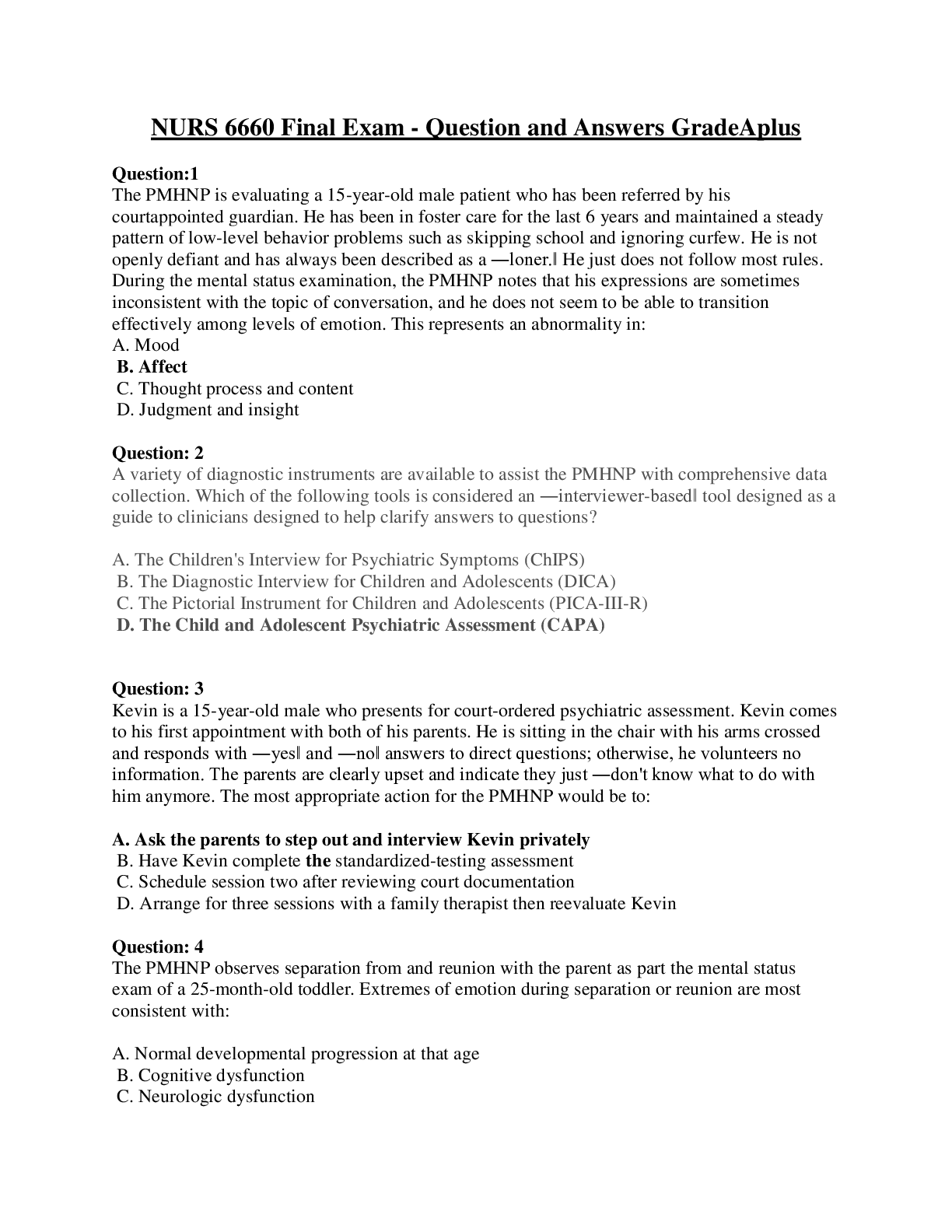
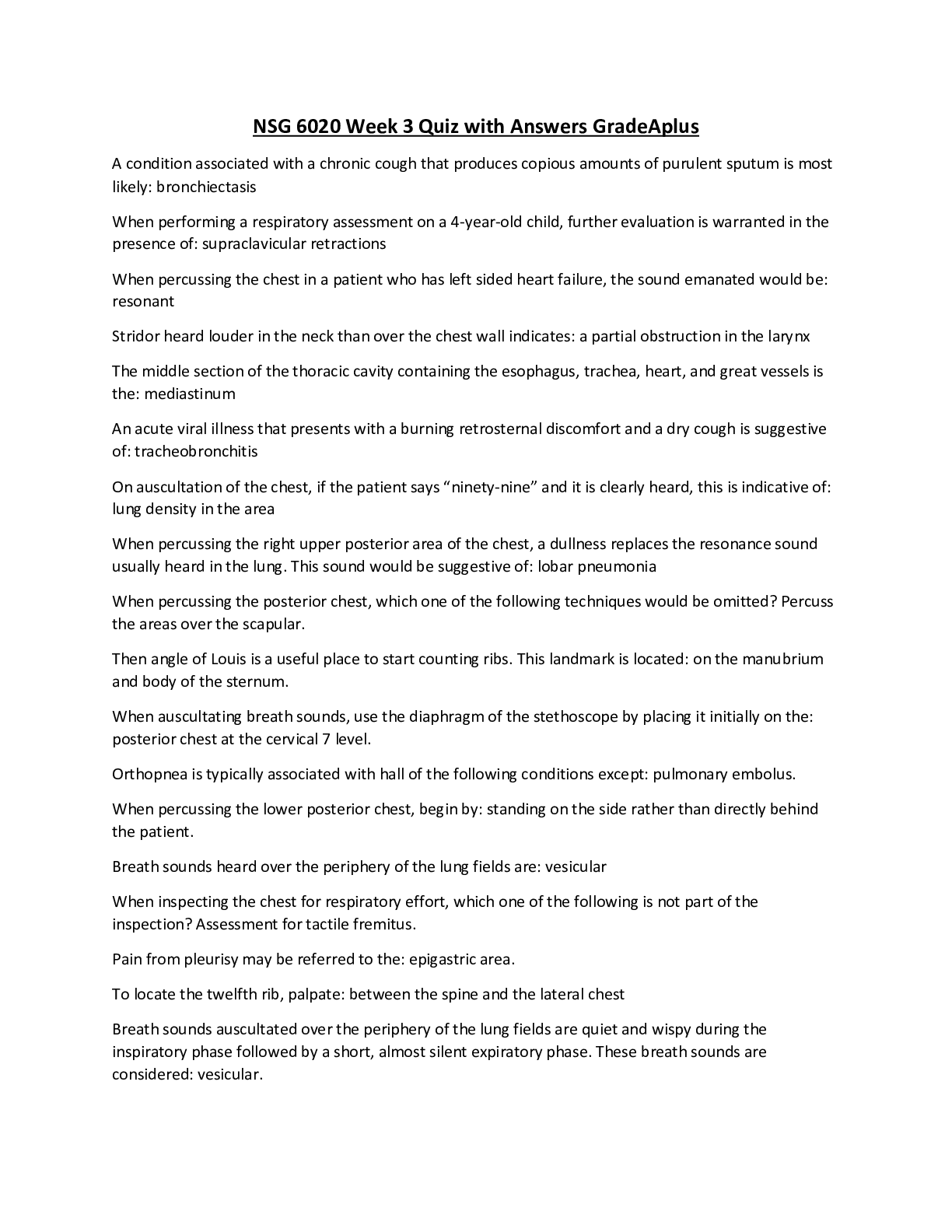
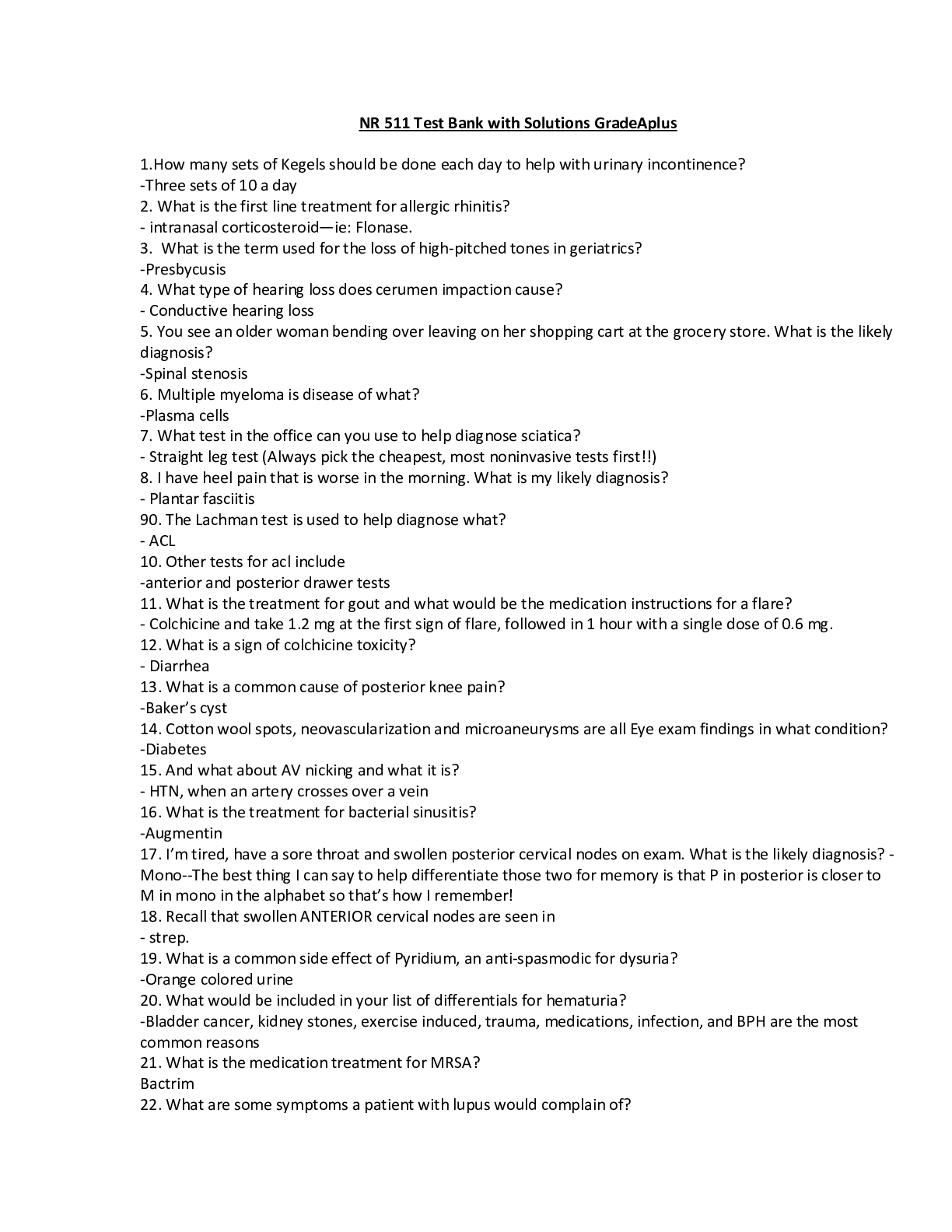
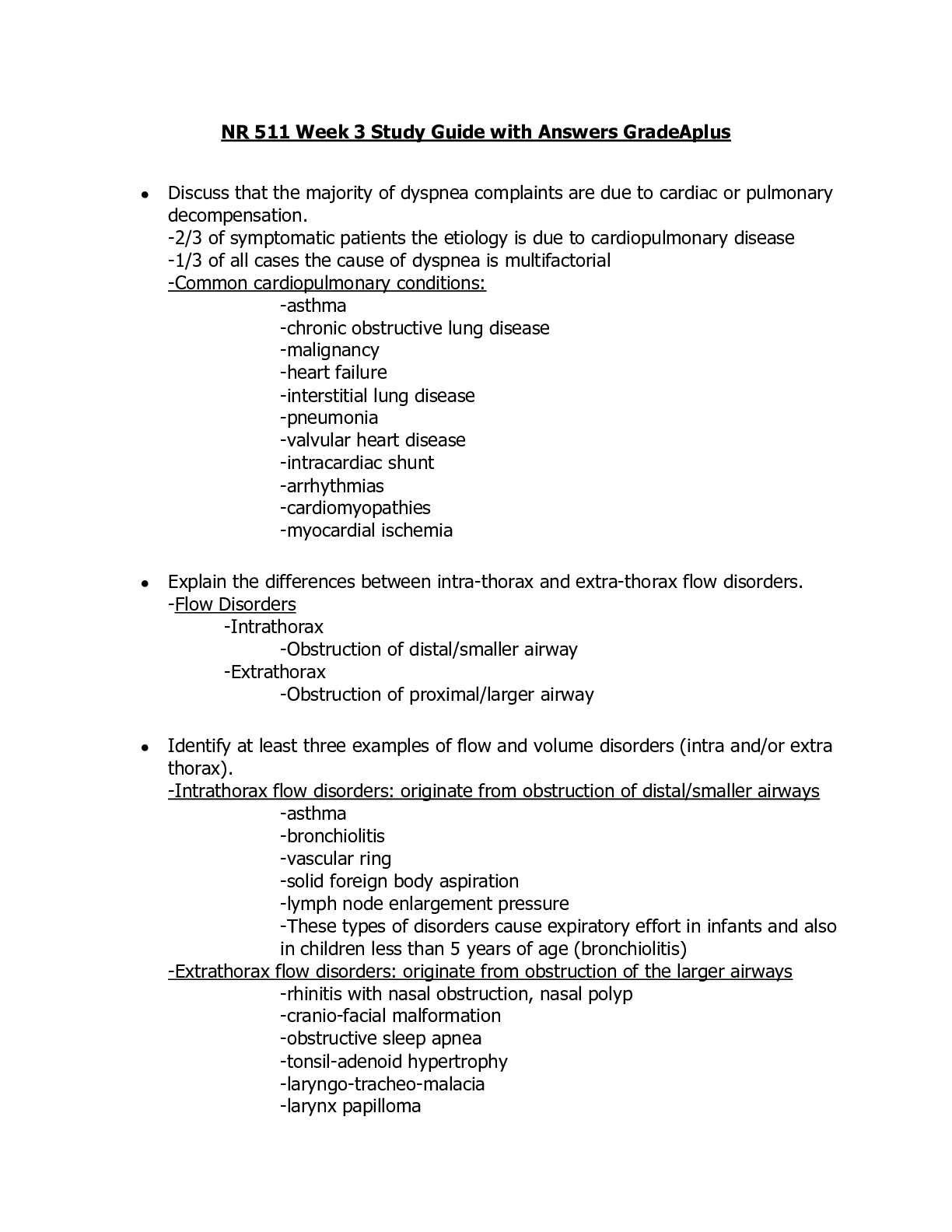

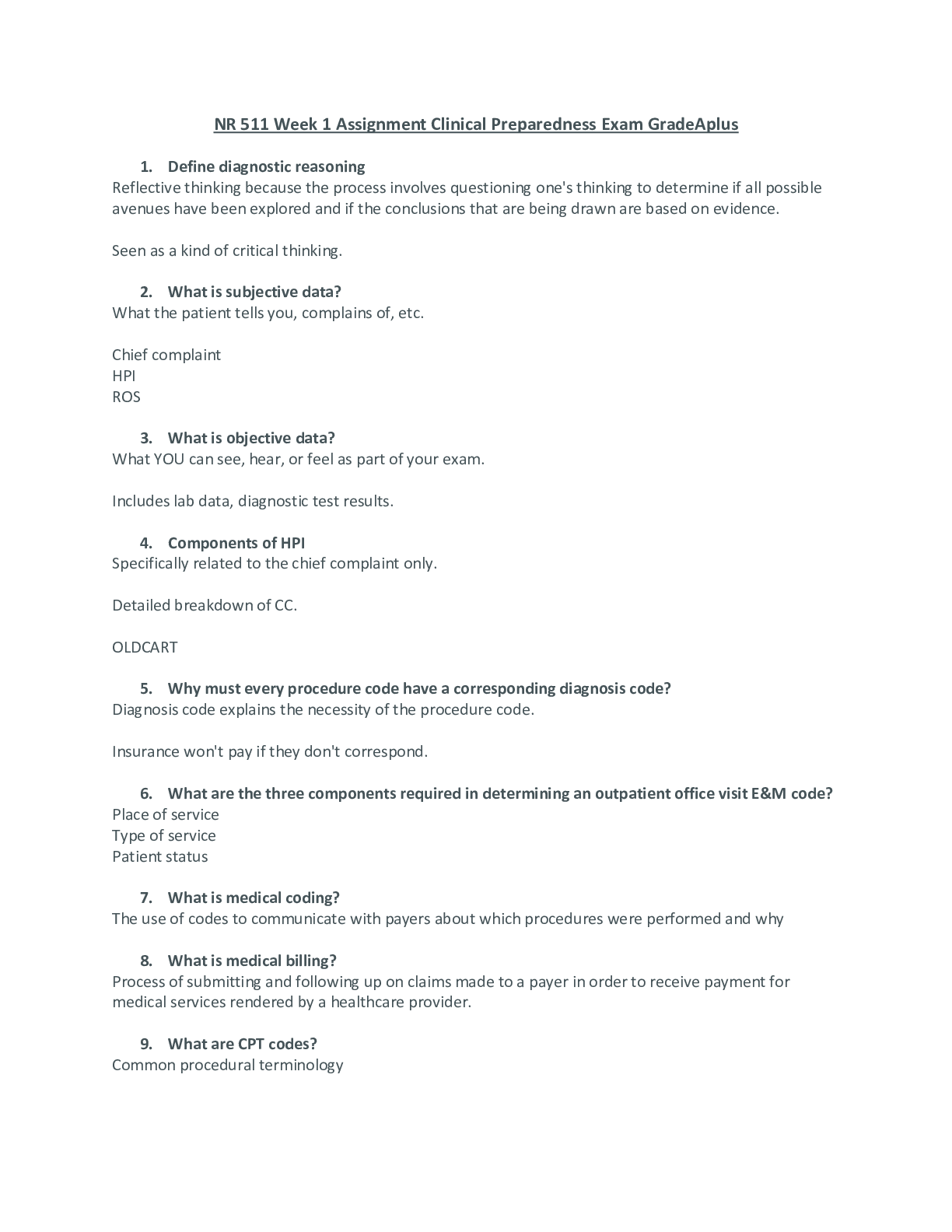






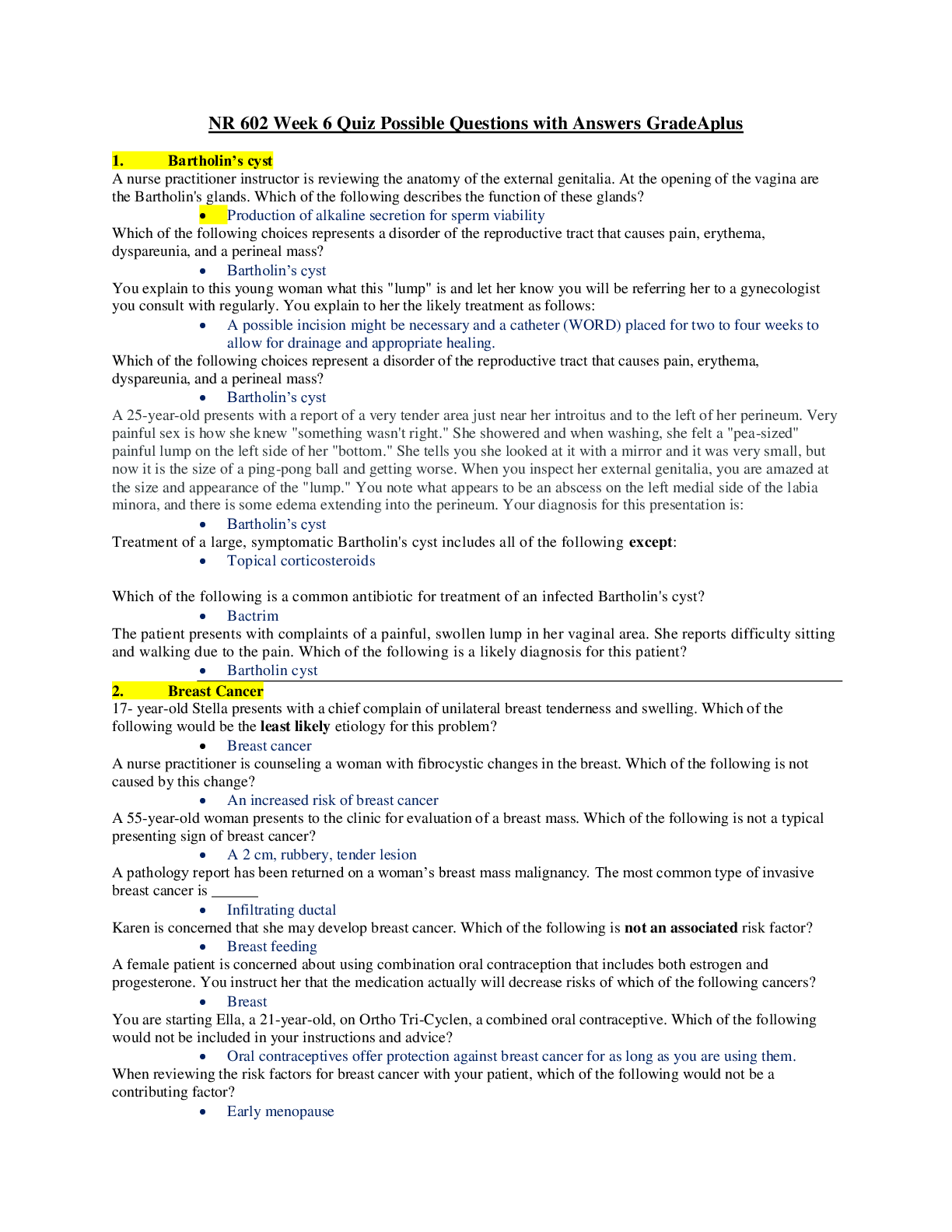
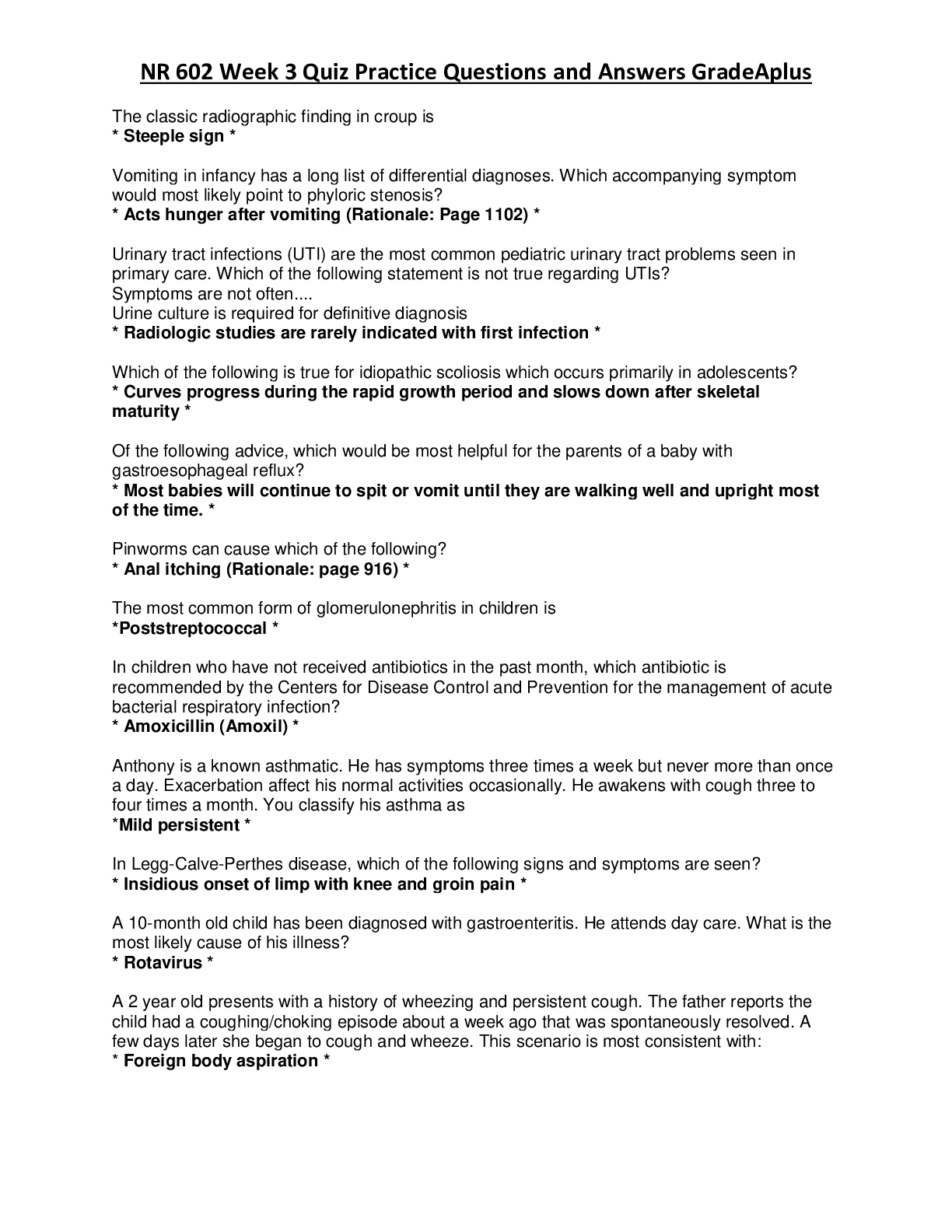
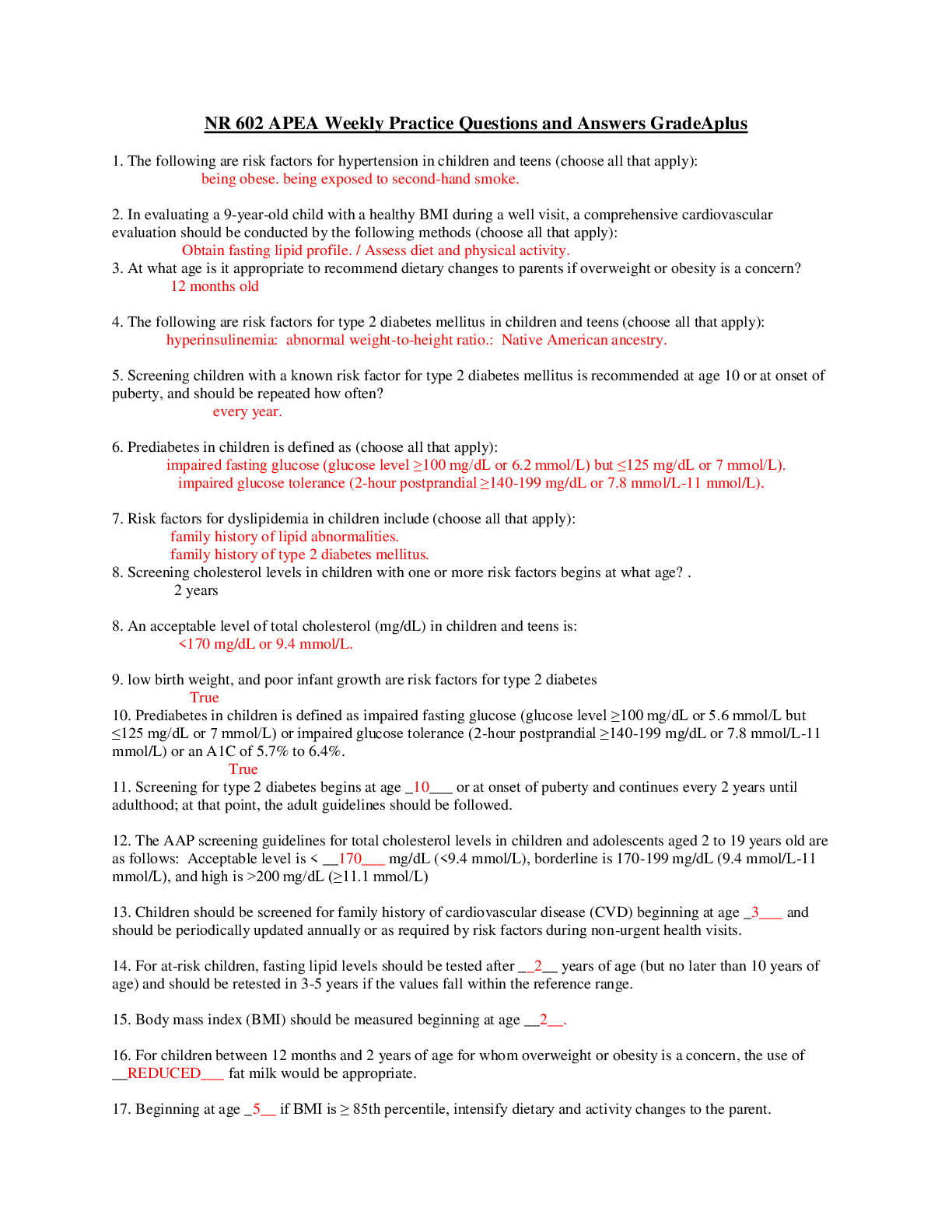
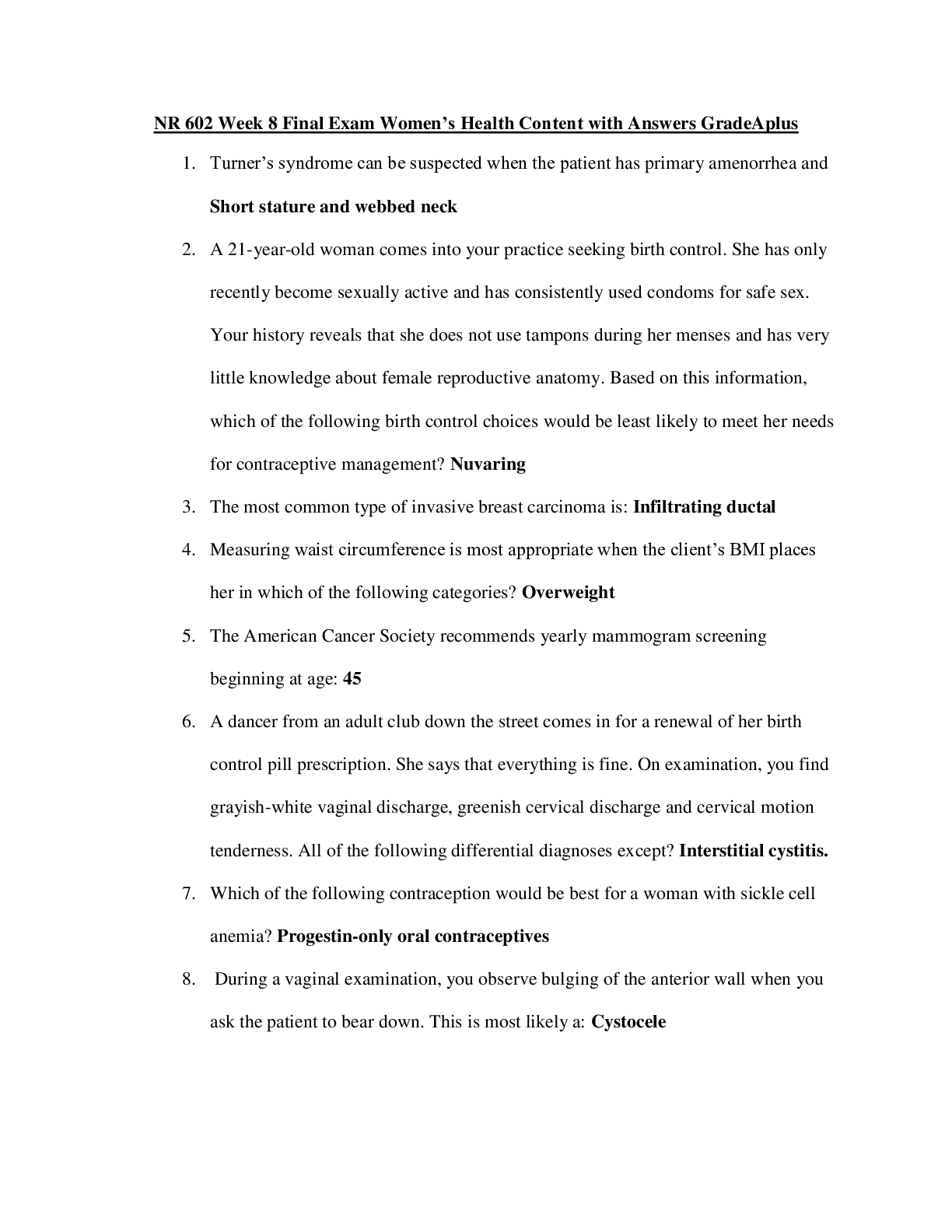
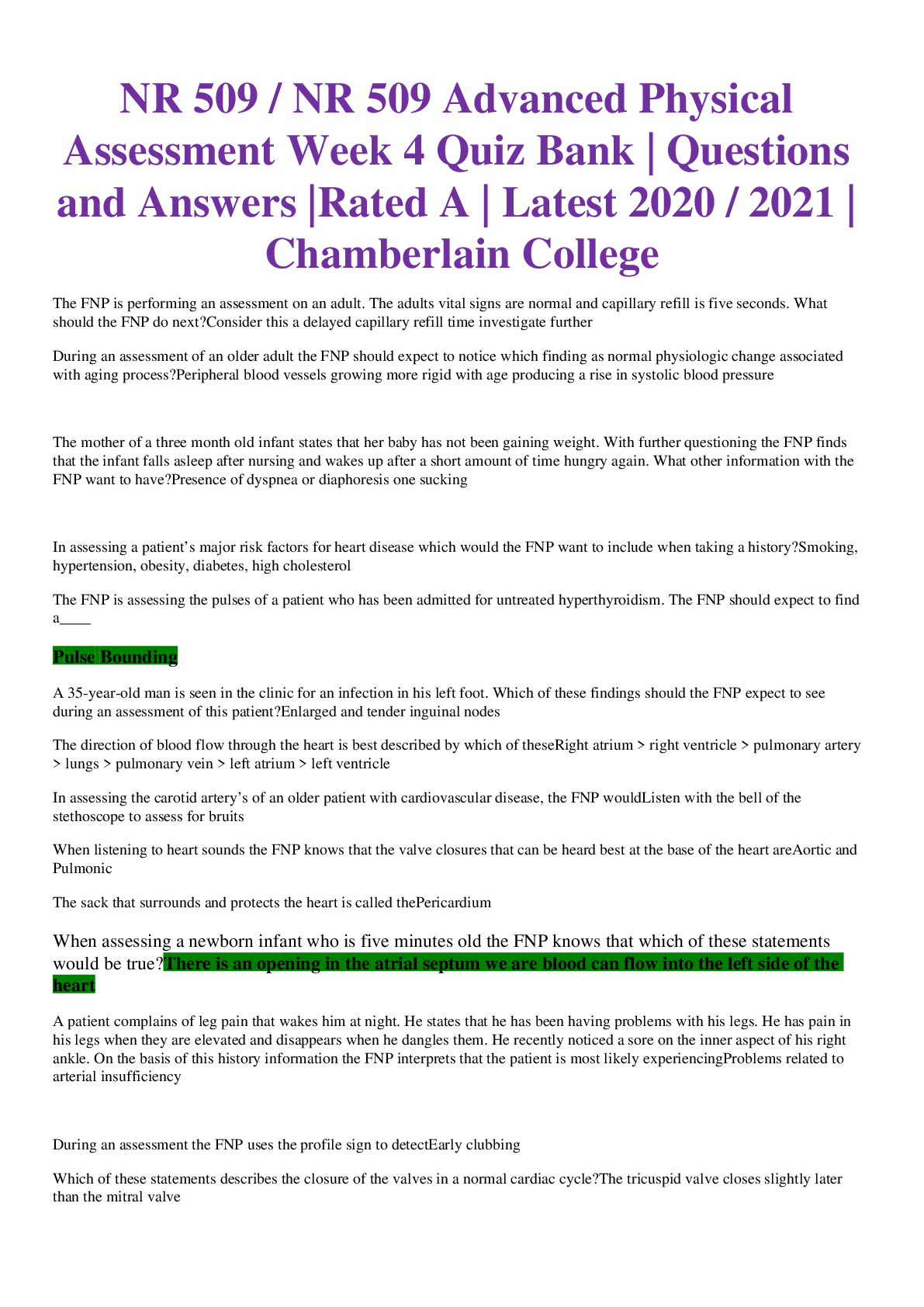
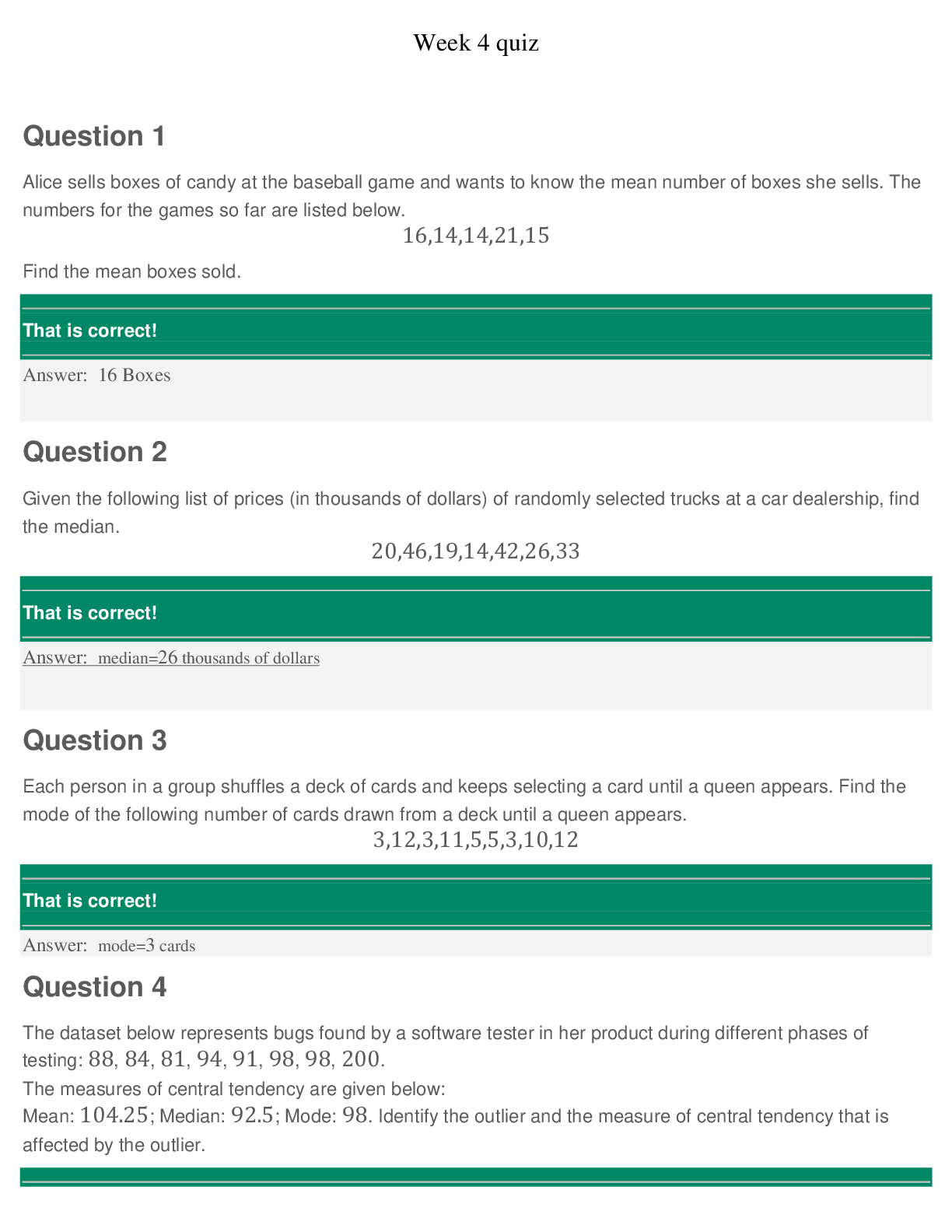
 (1).png)

